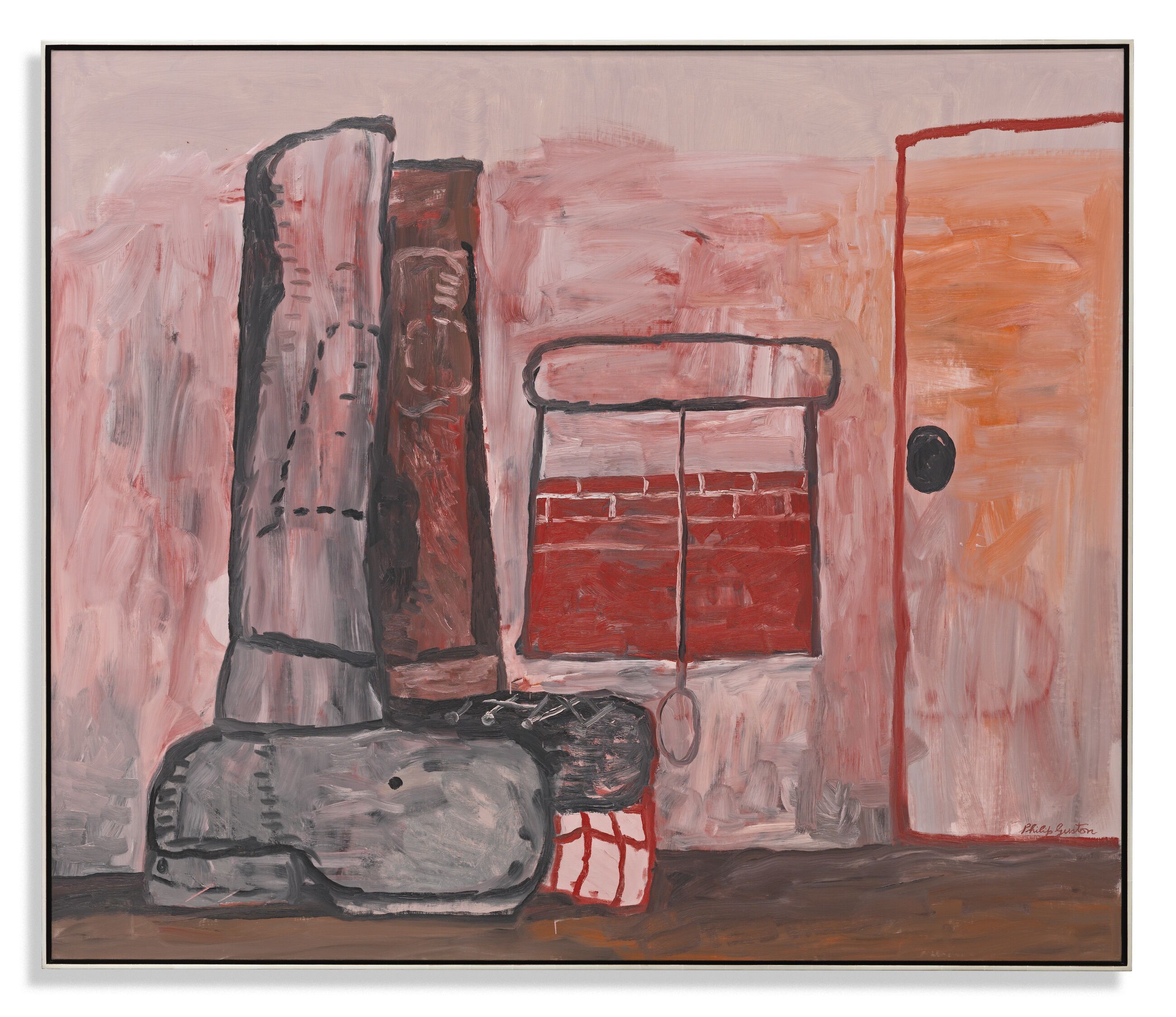Philip Guston
Studio in Small Town
Studio in Small Town
Price available upon request
1979
Oil on canvas
172.7 x 203.2 cm / 68 x 80 in
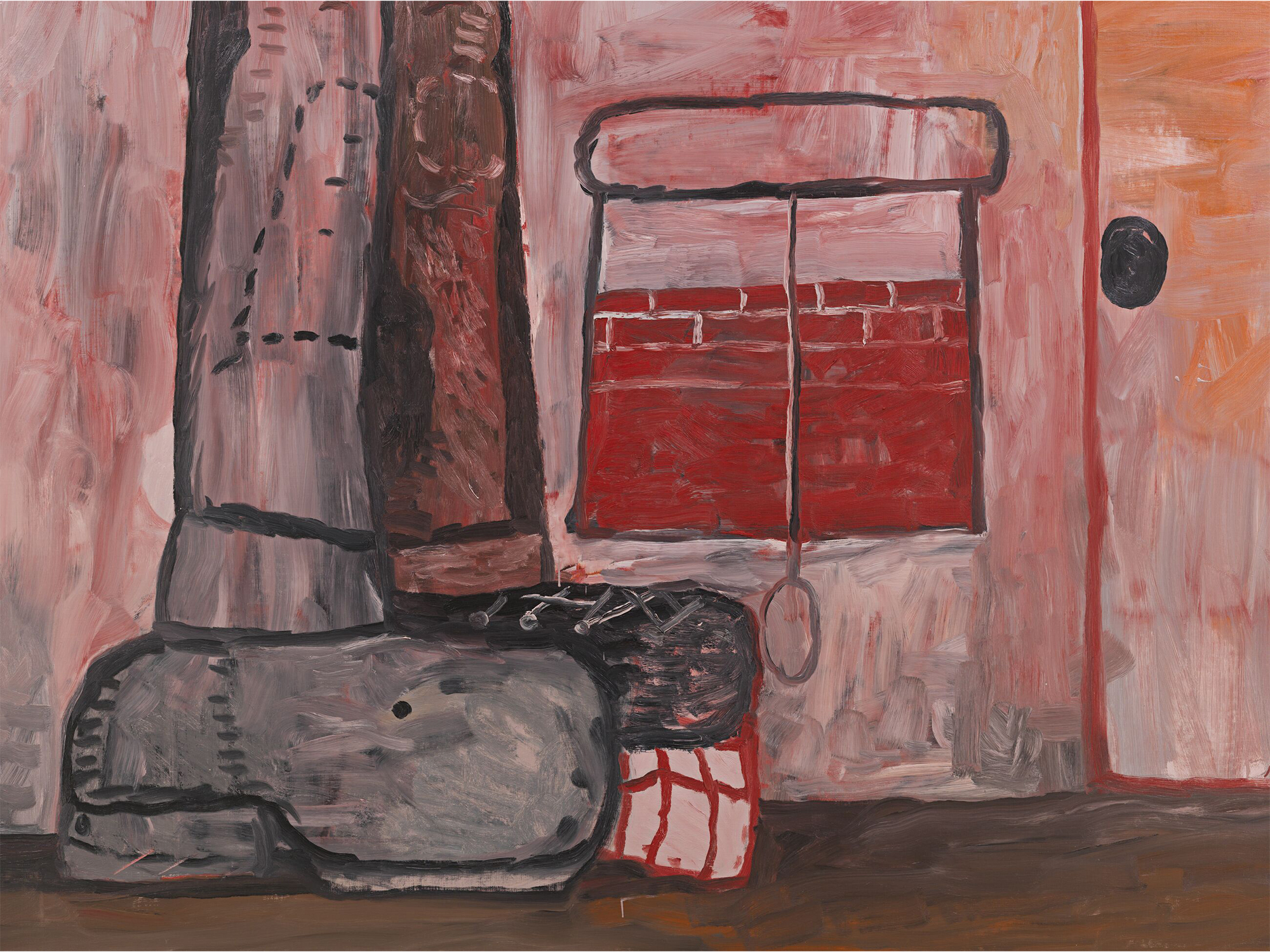
In a breakthrough 1970 exhibition at Marlborough Gallery in New York, Philip Guston exhibited 33 large canvases that shocked the art world. Rendered in a cartoonish style, these paintings marked a radical departure from the heady, celebrated abstractions he had produced in the 1950s. Instead, the works explored intimate and existential themes through a new form of figuration, expressed with a riveting sense of unmoored freedom. Speaking to this change in approach, the artist affirmed: ‘I got sick of all that purity! I want to tell stories.’ [1]
In ‘Studio in Small Town’ (1979), Guston engages with a long tradition of painters who adopted the artist’s studio as their subject matter. Like many artists of his generation, Guston viewed the studio as ‘a field of contest’ and, accordingly, his paintings show the physical reality and psychological drama of the artist’s workplace. [2] Eschewing the typical signifiers of the studio, as seen in his other works, like ‘Painter’s Table’ (1973) and ‘Studio Landscape’ (1975), ‘Studio in Small Town’ embraces the emotional process of painting.
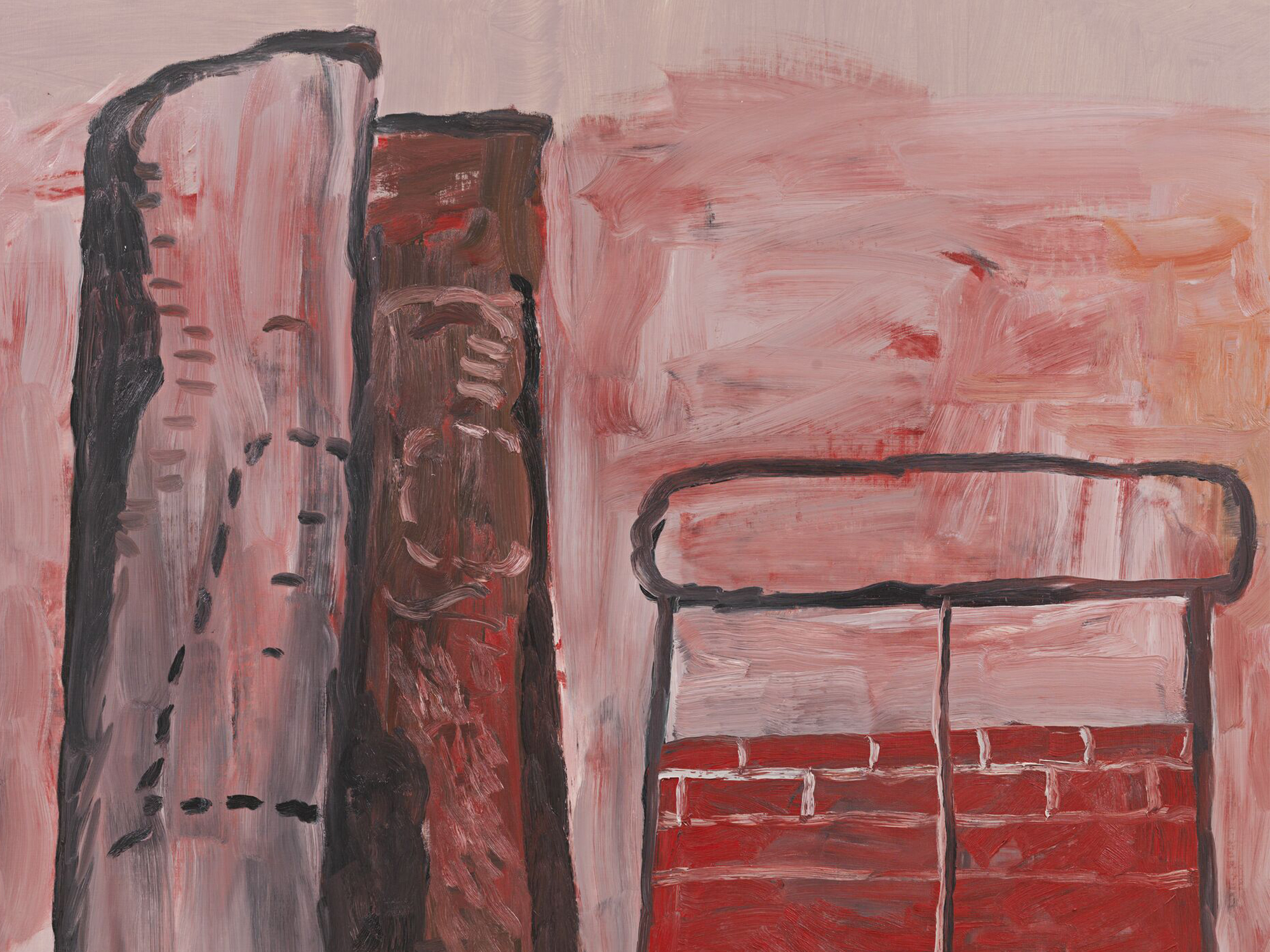
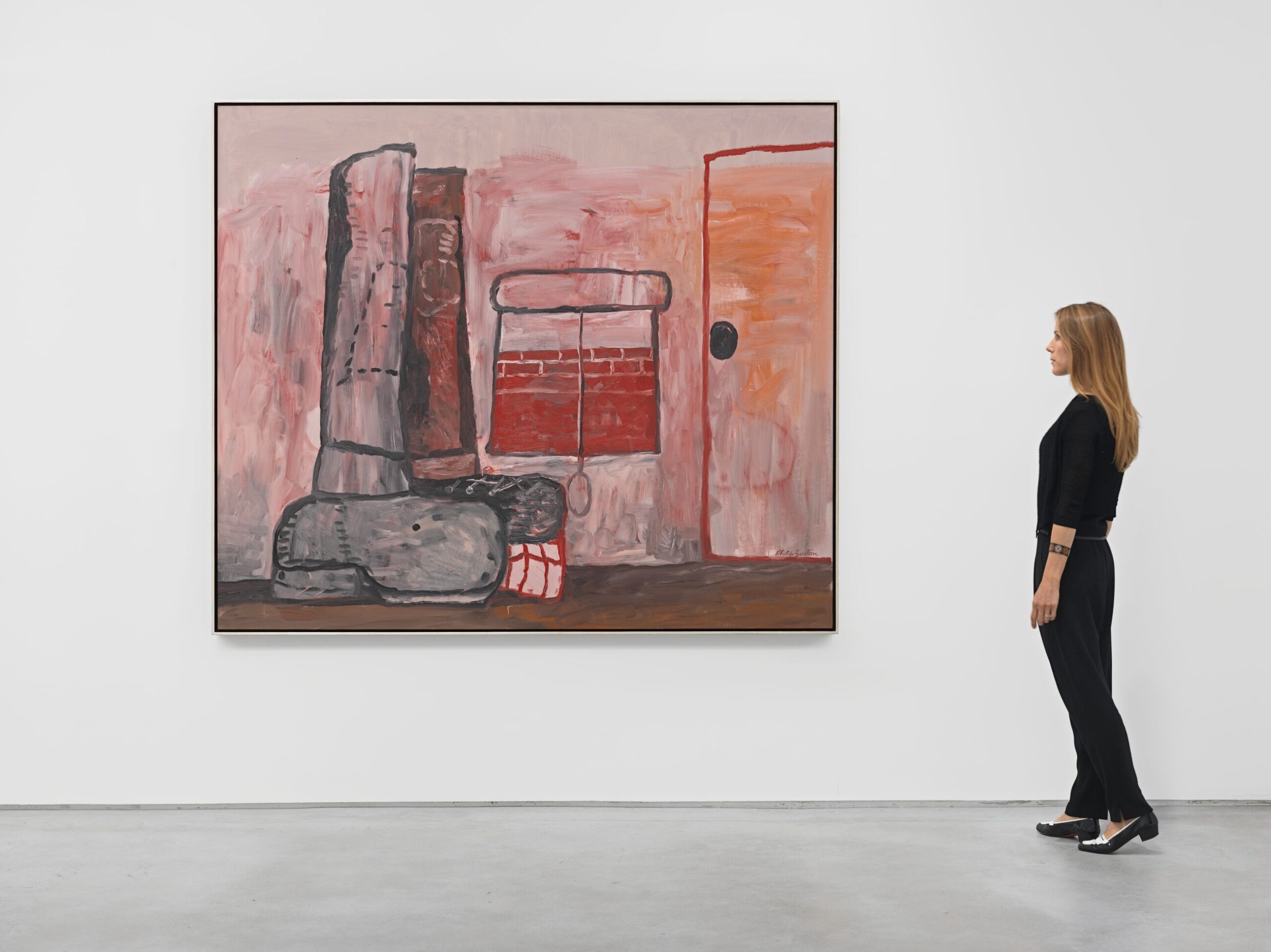
Here, Guston depicts a minimal yet visceral interior that resembles a theatrical backdrop, with a door and window comprising the studio. Uncannily, the composition is inhabited by two disembodied legs—one of which steps on what appears to be a spider web. With window shade drawn, our view extends to a brick wall forming a horizon line, distinguishing between private and public spheres of life. Taken as a whole, this deeply enigmatic work is loaded symbols of a turbulent and highly personal lexicon that could never be fully translated.
Belying this seemingly surreal scene, these visual motifs reoccur throughout Guston’s illustrious and varied career. Windows and brick walls are visible in some of his earliest works from the 1930s, like ‘Mother and Child’ (c. 1931), while boots appeared as early as 1968, and disembodied legs repeat in works throughout the 1970s, visible in studio depictions such as ‘Late Afternoon’ (1972). Spiderwebs, which Guston seems to use as a device related to preoccupying thoughts, began to emerge in the mid 1970s, as seen in ‘Web’ (1975).
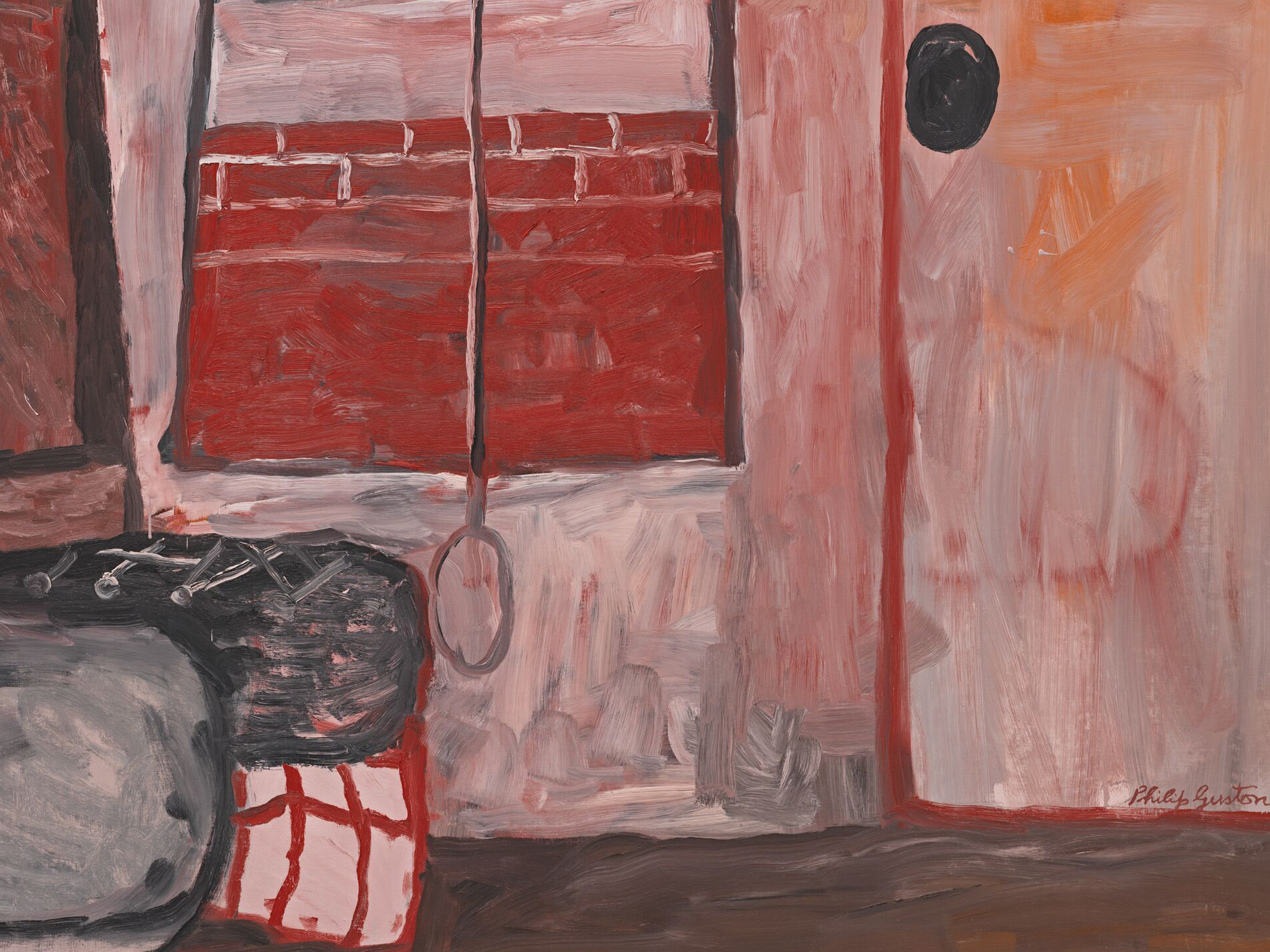
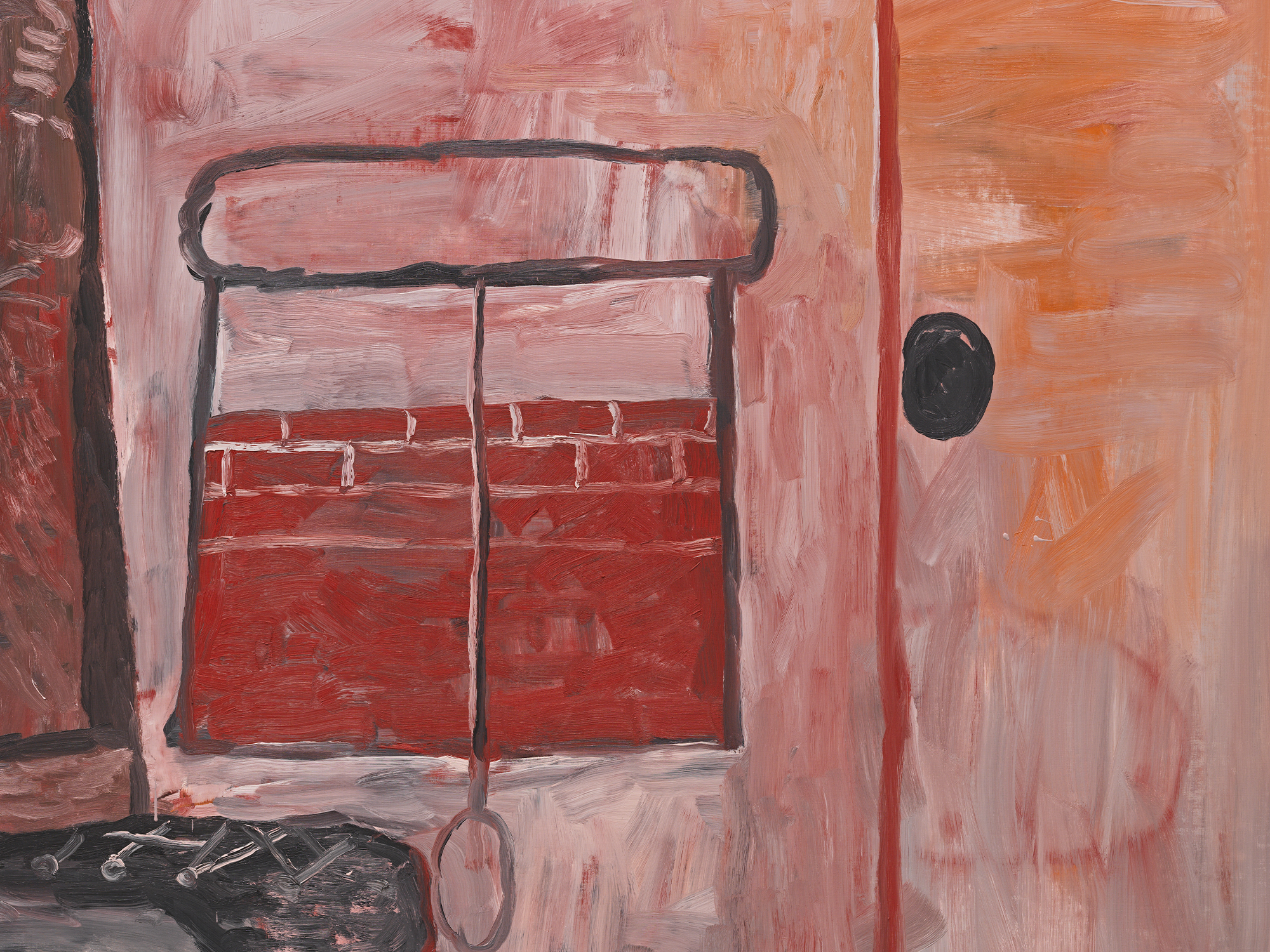
The imagery that surfaces in the late works possess a transformative quality and are often repurposed and recontextualized, carrying several resonances. As curator Mary Drach McInnes observes, ‘Guston assembles a personal iconography and endows it with layers of meaning. His images are clusters of site, culture, memory, history and emotion.’ [3] With this in mind, it is tempting to interpret ‘Studio in Small Town’ as a self-portrait: the artist as workman, his thoughts meshed with his Woodstock studio, isolated from an art world that had not yet accepted his evolution.
Motivated by internal forces, Guston’s last works express a sense of determination. Like ‘Studio in Small Town,’ these paintings are chiefly concerned with searching for self-representation, a subject that would continue to occupy the artist until he died in 1980. In a 1960 interview with David Sylvester, Guston said, ‘I think a painter has two choices: he paints the world or himself. And I think the best painting that’s done here is when he paints himself, and by himself I mean himself in this environment, in this total situation.’ [4]
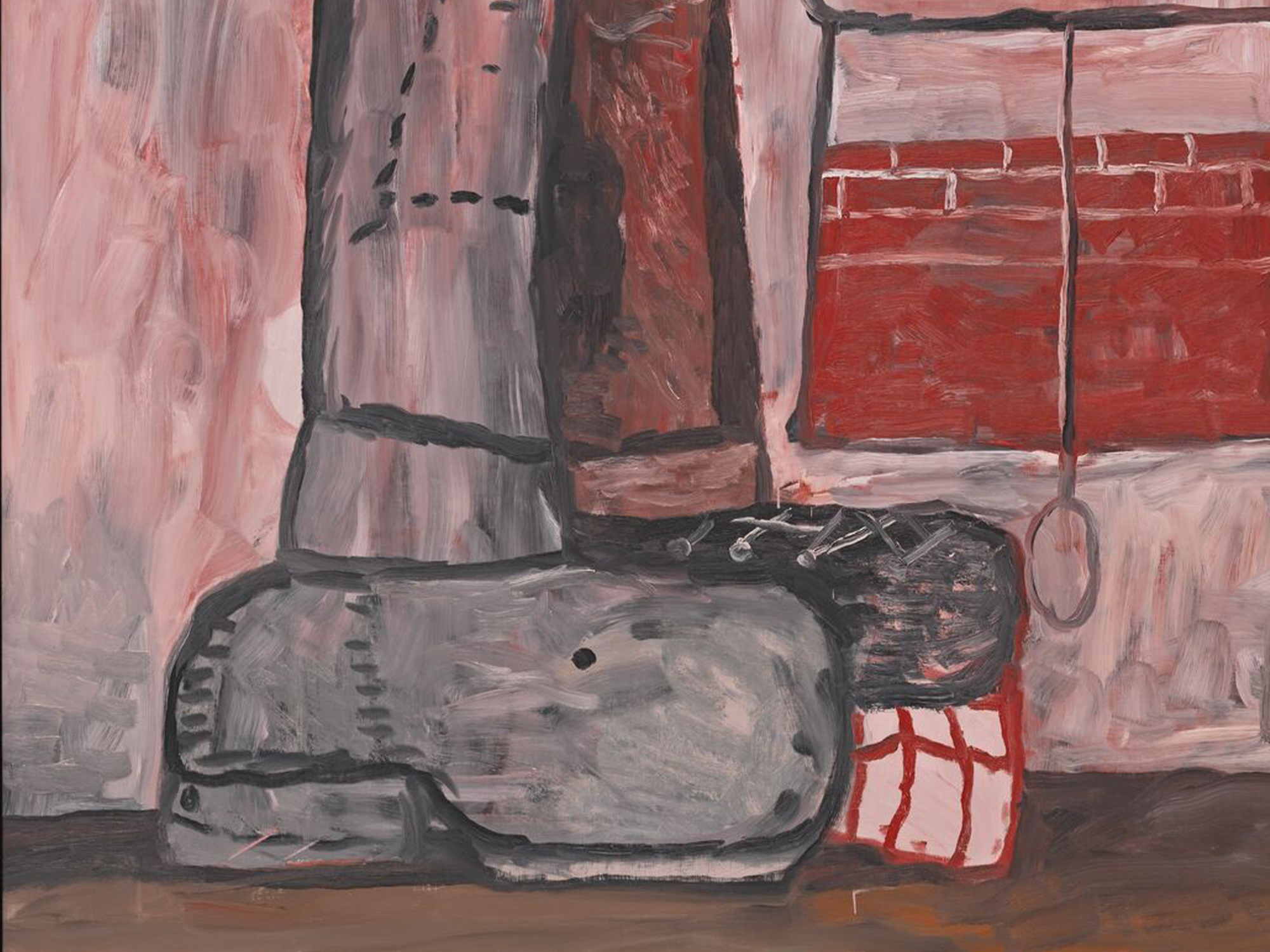
About the artist
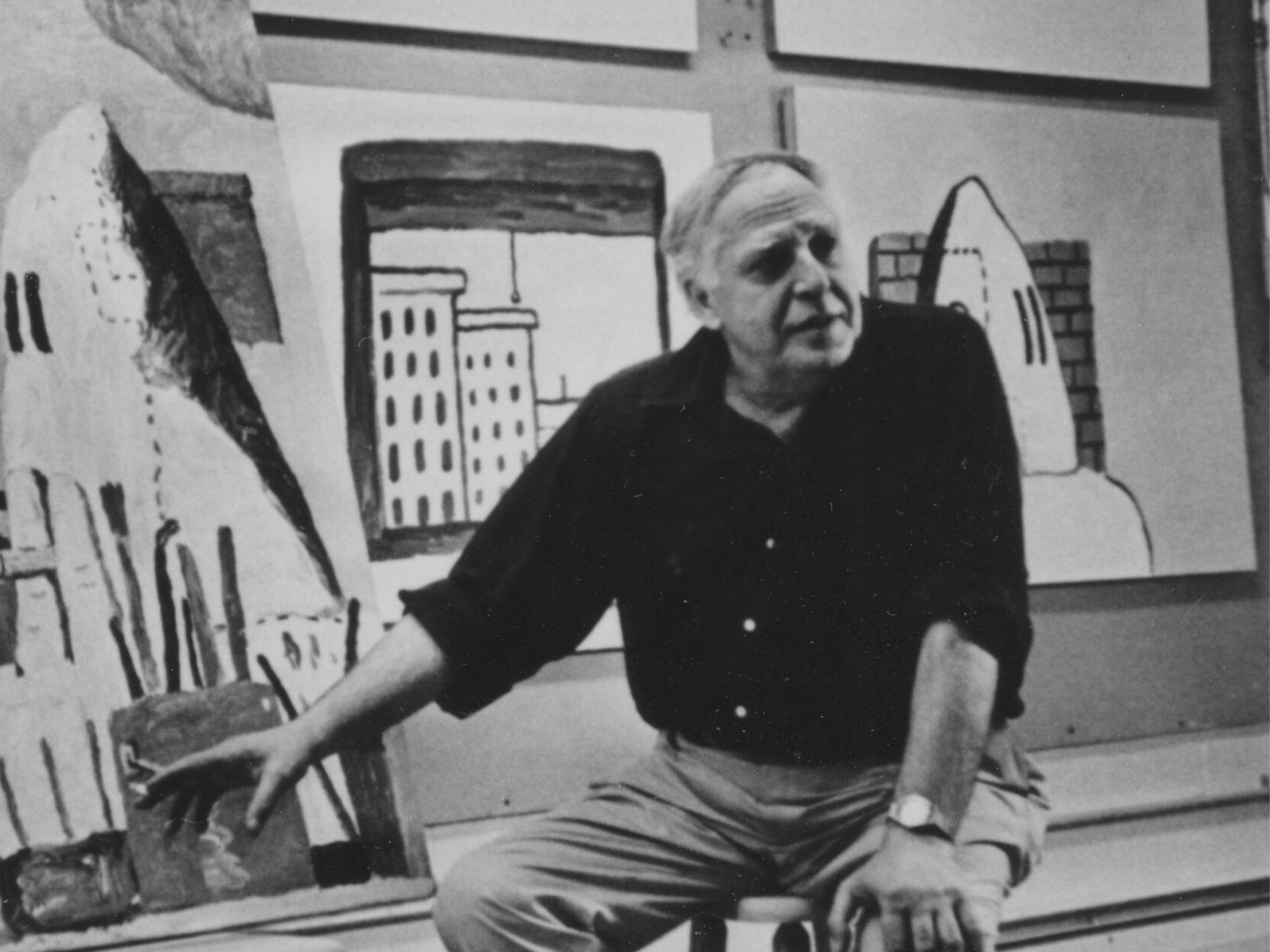 Philip Guston (1913 – 1980) is one of the great luminaries of twentieth-century art. His commitment to producing work from genuine emotion and lived experience ensures its enduring impact.
Philip Guston (1913 – 1980) is one of the great luminaries of twentieth-century art. His commitment to producing work from genuine emotion and lived experience ensures its enduring impact.Guston’s legendary career spanned a half century, from 1930 to 1980. His paintings—particularly the liberated and instinctual forms of his late work—continue to exert a powerful influence on younger generations of contemporary painters.

Portrait of Philip Guston. Photo: Frank Lloyd
All artwork images © The Estate of Philip Guston
1.) Philip Guston, quoted in Ingrid Pfeiffer, Max Hollein (eds.), ‘Philip Guston Das grosse Spätwerk / Late Works,’ Cologne: Strzelecki Books, 2013, p. 18.
2.) Kim Sichel and Mary Drach McInnes, ‘Philip Guston. 1975-1980: Private and Public Battles,’ Boston: Boston University Art Gallery, 1994, p. 10.
3.) Ibid., p. 17.
4.) Philip Guston, quoted in Paul Schimmel, ‘Philip Guston: Painter 1957–1967,’ New York: Hauser & Wirth Publishers, 2016, p. 9.



